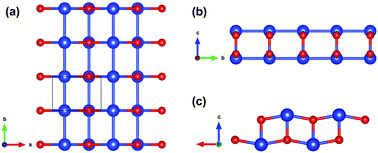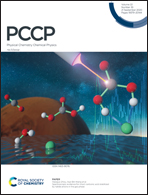A novel SiO monolayer with a negative Poisson's ratio and Dirac semimetal properties†
Abstract
Although a number of interesting physical properties such as a negative Poisson's ratio (NPR) and Dirac semimetal (DS) properties have been recently predicted in two-dimensional (2D) materials, the realization of a 2D material that exhibits both of these DS and NPR features has rarely been reported. Here by adopting particle swarm optimization (PSO) algorithms combined with first-principles methods, we successfully construct a novel SiO monolayer (Pmna), the dynamic and thermal stability of which was characterized using phonon spectrum calculations and molecular dynamics simulations. In particular, Young's modulus and Poisson's ratio calculations showed that the Pmna monolayer exhibits high mechanical anisotropy with an in-plane NPR originating from its puckered atomic arrangement. More notably, the band structure of the Pmna monolayer possesses zero bandgap with four Dirac cones in its first Brillouin zone, exhibiting a DS feature. From the calculations of orbital-resolved band structures, the Dirac cone was revealed to originate from the orbital hybridization of Si and O atoms. The Pmna monolayer is the first 2D structure in the Si–O system that has both an NPR and Dirac semi-metal properties, providing a new model for exploring 2D multifunctional materials.



 Please wait while we load your content...
Please wait while we load your content...